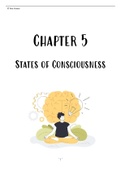Summary
Summary Chapter 5 SLK 120 notes
- Course
- Institution
- Book
These notes are compiled using the textbook, lecture notes, and study outcomes. They are easy to understand and include diagrams. All of the visual material used in the textbook and in lectures are also included.
[Show more]






